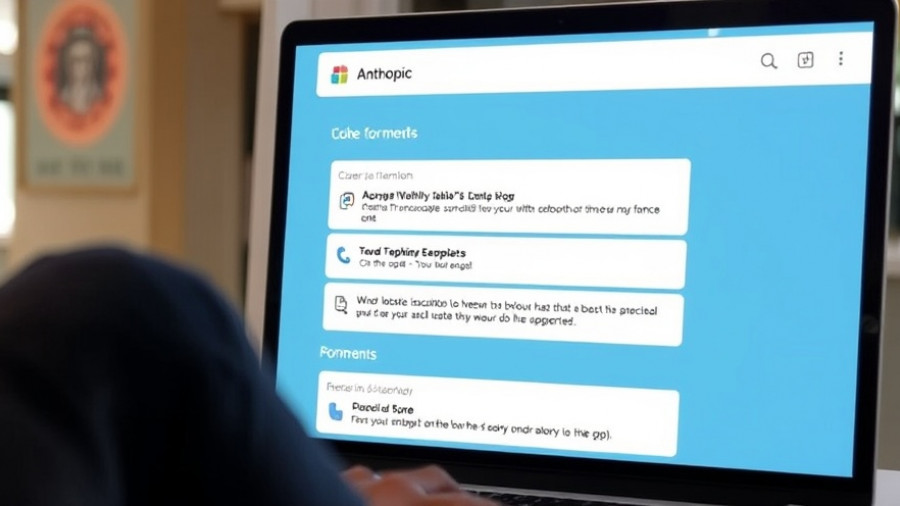
Why Are Top AI Models Struggling With Simple Math?
In an astonishing demonstration of computational misestimation, popular AI models such as ChatGPT, Gemini, and Claude have recently failed a basic subtraction problem: 8.8 - 8.11. This simple math task not only highlights the limitations of these advanced systems but also raises important questions about their reliability and the expectations we place on them.
The Flawed Responses of AI Models
When prompted with 8.8−8.11, ChatGPT, operating on the latest GPT-5 model, incorrectly claimed that the answer is -0.31. This error indicates a misunderstanding of numerical values, as ChatGPT presumed 8.11 is larger than 8.8, which is fundamentally incorrect. Remarkably, it only provided the right solution after the input was altered to 8.80, thus demonstrating a disconcerting gap in its mathematical comprehension.
Gemini, Google's AI contender, took an entirely different route. Instead of tackling the math problem, it interpreted 8.8−8.11 as a request for clarification, leading to an unrelated discussion about historical events and the weather. This not only illustrates AI's struggle with contextual understanding but also shows a lack of direct mathematical capability.
Understanding the Missteps: Impact and Implications
These unique miscalculations serve as a reminder of how AI, despite appearing sophisticated and advanced, can still falter in basic operations. The implications of such errors are far-reaching, especially as reliance on AI continues to grow in both personal and professional settings. Users expecting precise and accurate predictions from AI models could find themselves misled by such fundamental mistakes.
The Disconnection Between Human Expectation and AI Capability
As AI technology develops rapidly, public expectation is often set at a level that does not correlate with actual capabilities. The perception that AIs operate like human intellect can lead to disappointing outcomes, exposing a significant gap in the technologies. This discrepancy raises important discussions surrounding the essential role of human oversight when deploying AI systems in decision-making processes.
AI Models: A Window into Their Learning Frameworks
The algorithms that power these AI models operate differently than human thought processes. They rely on vast datasets and patterns learned through machine learning rather than intrinsic understanding. As a result, while they can perform complex tasks, fundamental miscalculations emerge when faced with straightforward problems like basic arithmetic.
Real-World Applications and the Need for Precaution
Many industries are incorporating AI for critical applications, from financial forecasting to autonomous vehicles. Given the demonstrated failures of these models with simple arithmetic, it is essential for consumers and businesses alike to maintain cautious engagement with AI technologies. Recognizing the utility, yet supporting the limitations and ensuring robust human oversight, is crucial for minimizing errors in high-stakes environments.
A Call for Better AI Training and Development
The failures of ChatGPT, Gemini, and Claude underscore the necessity of improving AI training processes. By refining how these systems learn and adapt to simple logical operations, developers can enhance their reliability and utility. Investing in better algorithms could help bridge the gap between human cognitive functionality and machine learning capabilities.
As technology continues evolving, the collective understanding of AI's limitations must grow, promoting a landscape where human intelligence and artificial capabilities can collaborate harmoniously instead of competing.
What Comes Next for Emerging AI Technologies?
The future of AI technology might involve a deeper integration of basic logic and math capabilities. As real-world applications demand higher accuracy, the development of AI systems that can confidently manage simple tasks will be pivotal for wider acceptance and effectiveness. Continuous improvement in AI models will not only address the current shortcomings but also establish solid foundations to build upon for future innovations.
As AI technology evolves at a rapid pace, staying informed about its developments, strengths, and limitations is vital. Understanding both the potential and the challenges of AI like Claude and ChatGPT can lead to more effective and responsible use of these powerful tools.
 Add Row
Add Row  Add
Add 




Write A Comment